In today’s fiercely competitive environment, businesses are fighting to stay relevant and financially sustainable. Brands that ‘win’ cut through the sea of sameness and embrace the fact we’re living in an attention economy.
They are focused perpetually on their customers and their needs. And customer insights power the 4 Ps, as well as tactics such as TV creative, performance marketing, and content.
This thinking is not new.
Dr Phillip Kolter detailed the evolution of marketing from selling to creating value in 1967. For me, this ripping Kolter quote says it all: “Marketing is the science and art of exploring, creating, and delivering value to satisfy the needs of a target market at a profit. Marketing identifies unfulfilled needs and desires.”
Unfortunately, this ethos has fallen by the wayside as brands engage in a relentless advertising arms race to target everyone across all channels – primarily with short-term activations.
You must earn attention before you can monetise it
Kolter’s thinking is more paramount today than ever before. You must start with the customer and truly understand their pain points, as opposed to starting with a product or sales-first mentality.
From the minute we open our eyes each day, we’re bombarded with images and information vying for our interest – it’s little wonder attention has become one of our scarcest commodities.
In the late 70s, people who lived in modern cities saw about 2,000 ads a day, by 2007, it jumped to 5,000. Today, that number has swelled to around 10,000 – and that doesn’t even include social media!

Now couple this with a study by the Ehrenberg-Bass Institute that found 84% of advertising doesn’t get noticed or remembered.
So how do you ‘win'?
Brands need to develop a customer-led marketing strategy that cohesively utilises all of the paid, owned and earned tools within its arsenal.
And one of the biggest opportunities for brands is to become a lot more sophisticated at leveraging owned channels to have a different conversation with customers that focuses on their needs.
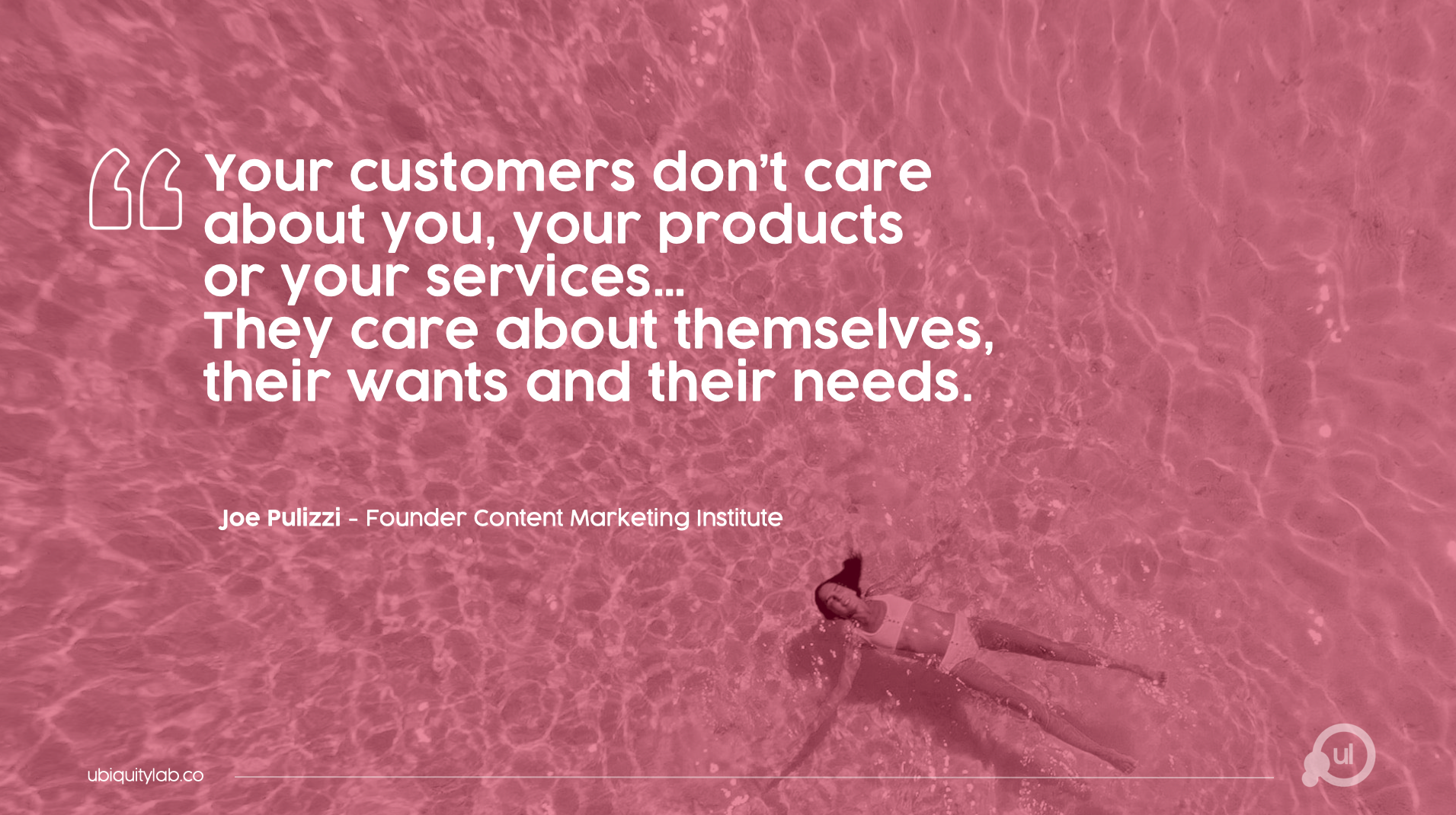
Owned and earned activity extends your paid spend
I’m a massive fan of the ‘godfather’s of effectiveness’, Les Binet and Peter Field, and their insight around balancing long-term brand building and short-term activation.
Too often, when I hear people talk about this research, it just boils down to TV and OOH. It’s a straight reach and share of voice play.
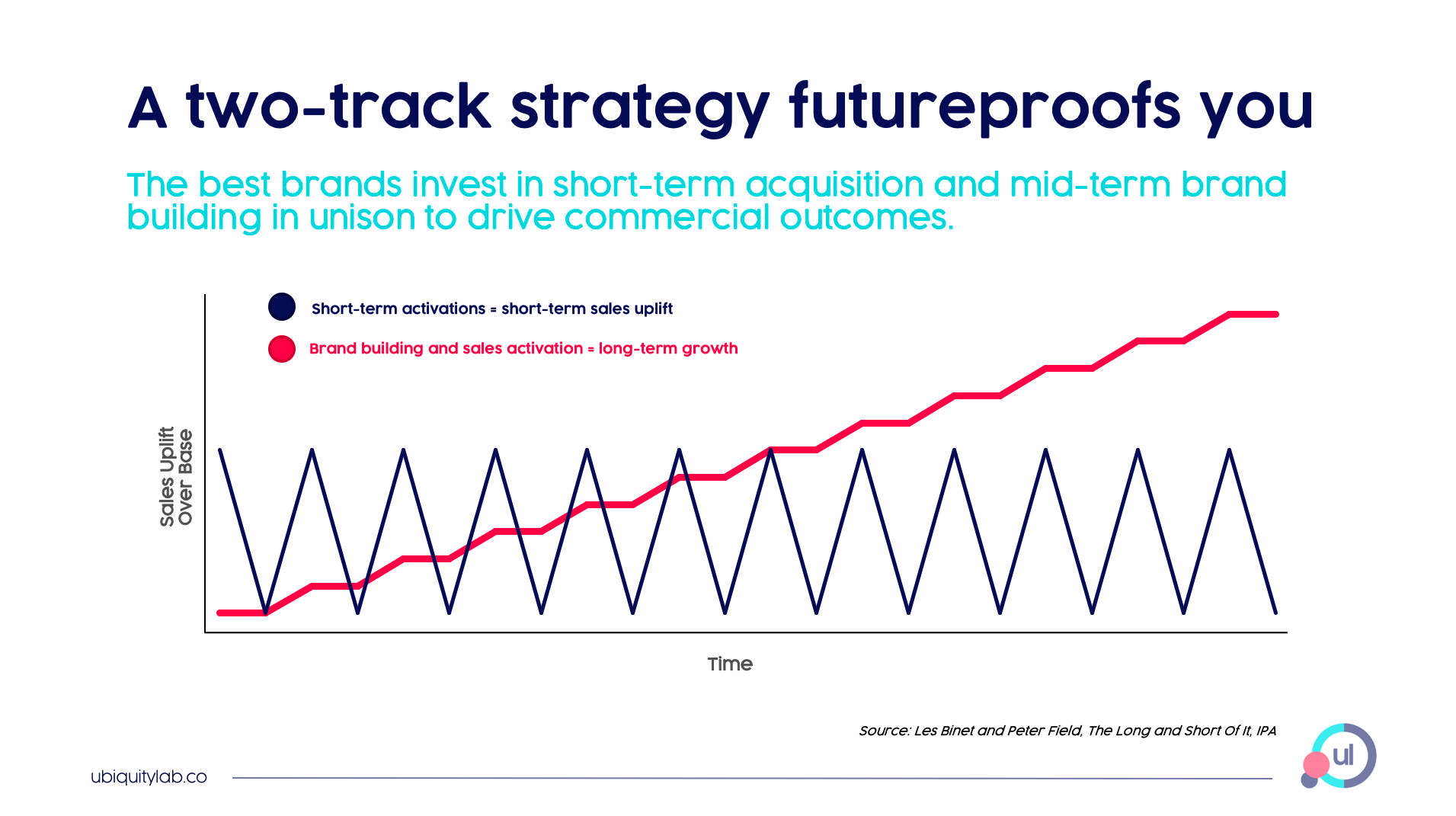
And while that’s unequivocally important, what gets missed is the role of owned and earned to help you achieve this.
That’s why I’m particularly enamoured with one of their more recent bodies of work, Marketing effectiveness in the digital era, which validates that brands who better leverage their owned and earned arsenal make their paid activity work harder. It states:
- Owned and earned media help you reach more people within your target market, increasing the effects on sales and profit.
- Campaigns that include owned online media are 13% more likely to report very large business effects than those that don't. Earned media appears to be even more powerful, boosting effectiveness by 26%.

This highlights a couple of key opportunities. Firstly, it reaffirms there’s no dichotomy between paid, owned and earned.
They’re stronger together than apart, and we need to choreograph them appropriately to deliver the best short- and long-term results.
Or as the godfathers put it: “Online activity serves to extend and amplify the impact of the original TV ad and link it through to sales. In the digital age, every ad has a direct response mechanism – it’s usually in the consumer’s pocket.”
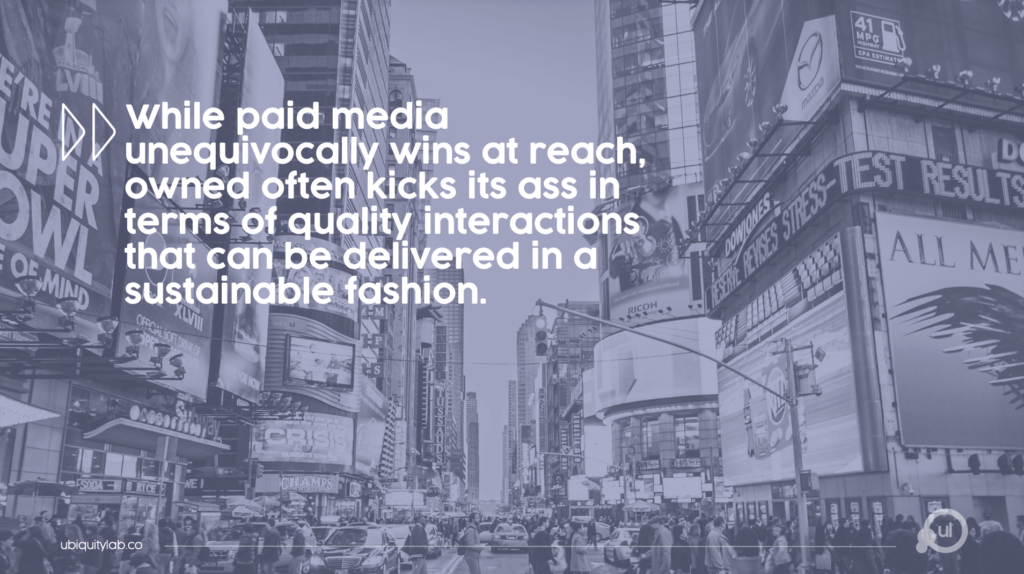
Secondly, it showcases the power of owned and earned to truly differentiate, build brand love, improve your media spend, and monetise through an integrated marketing strategy and ecosystem.
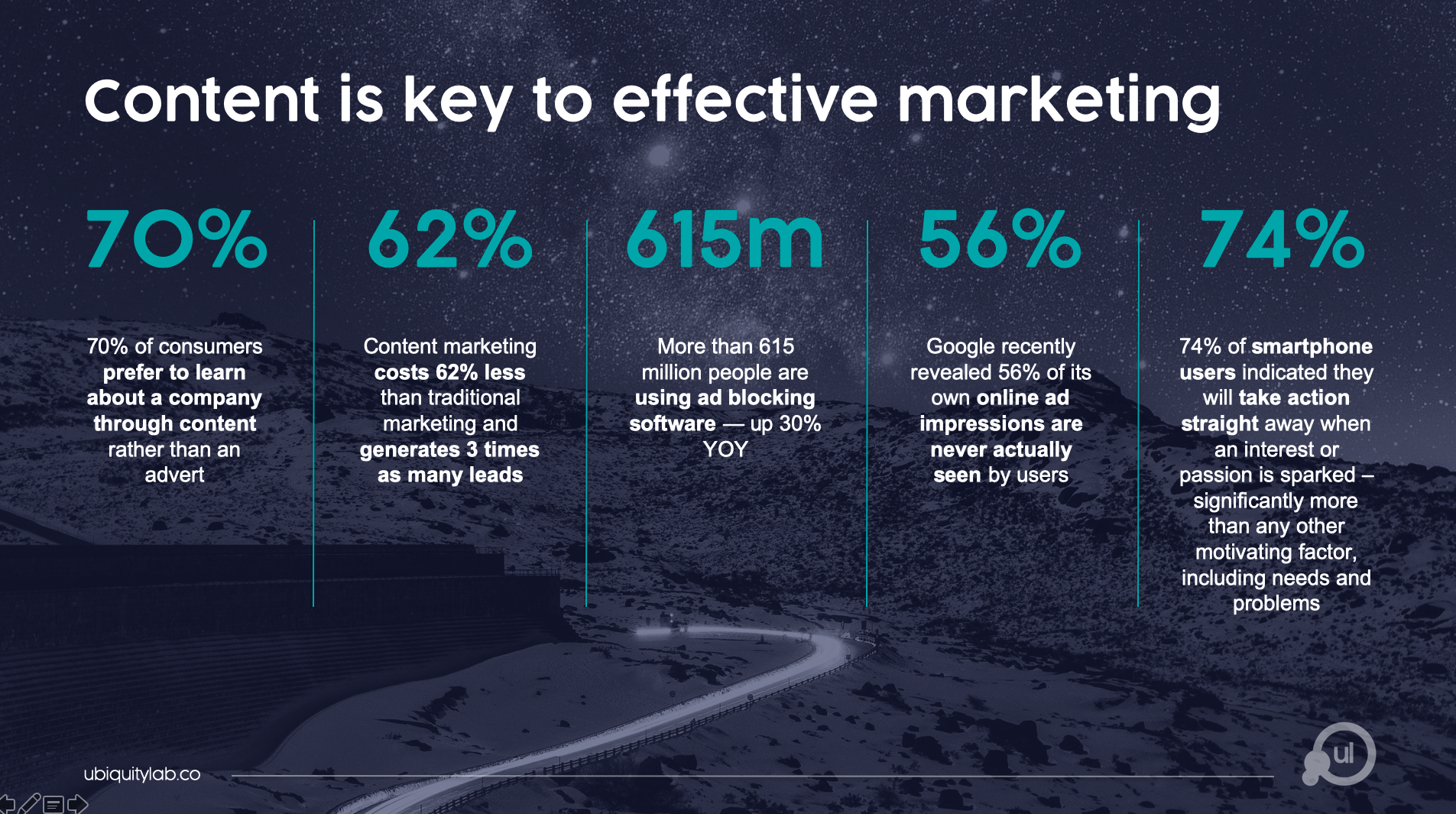
And content marketing in particular is far more effective than mass reach media at willingly pulling people into your ecosystem, rather than yelling at them in a largely undifferentiated, tedious and irrelevant way.
The hero of owned and earned is content – it's the ‘blood' that pulses through marketing's ‘body'. You don't have a website, app, community, video, social or anything else without content.
When done right, it is the lynchpin of a broader engagement and acquisition strategy that enables you to make data-based decisions at scale, boosting your marketing effectiveness.
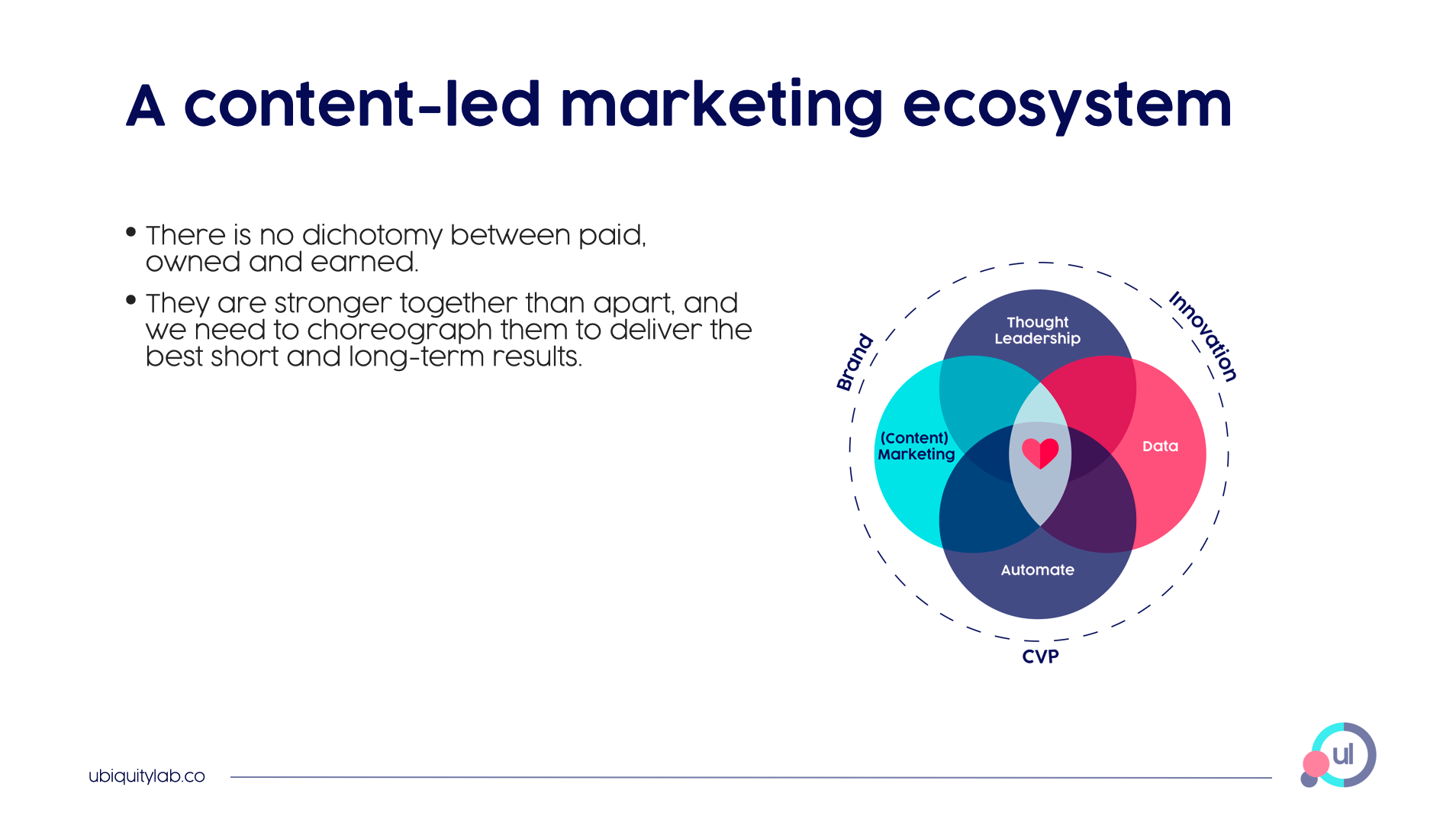
Develop insights that are a reference for everything you do
It’s impossible to create content that delivers sustainable, tangible business returns without a sophisticated, data-led strategy.
This diagnosis should be informed by key qualitative and quantitative insights, as well as business priorities.
Search data, in particular, is like truth serum; a purview into what consumers want at different stages of the journey.
This data should also help you understand your competitors for attention – not just within your category. Dissect what you can and can’t ‘own' from an organic perspective.
This won’t prevent you from targeting opportunities you can’t rank for. Instead, it will let you make informed decisions around the amplification spend required, given you won’t generate free, qualified leads via search.

Unlock emotional territories that drive salience and differentiation
By synthesising all data points, you’re able to formulate emotional engagement territories. These are the conversations you want to own and lead.
These territories are fuelled by emotional and rational insights that are strategically important to your business and your customers.
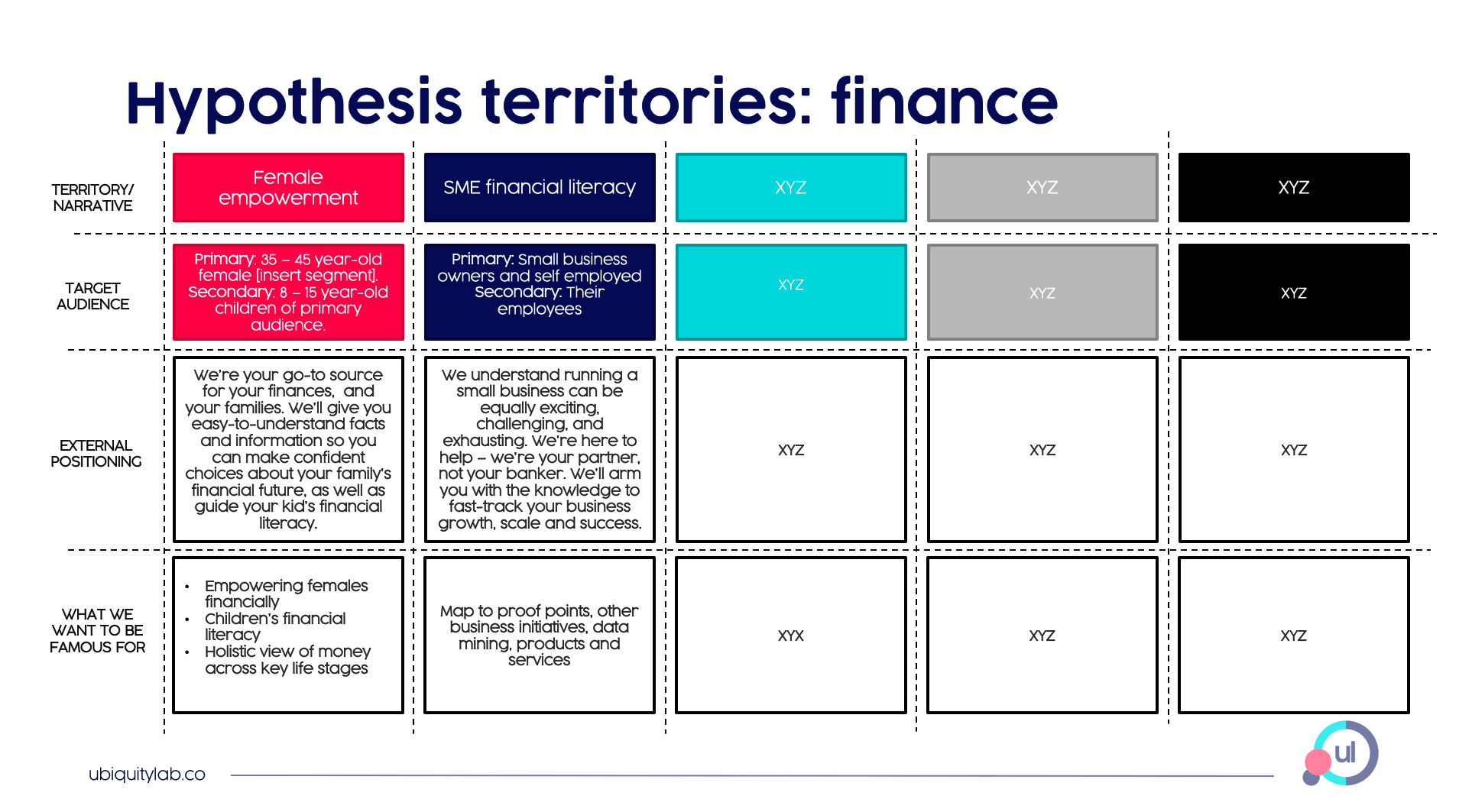
The insights that you use to create these territories should become a reference for everything you do – from briefing creative agencies, informing SEM, writing social copy and mapping customer journeys.
Brands that succeed in owned media produce content that’s genuinely audience-centric and tailored to where your target customer is during the journey. Or they create a user generated community to power content production with them.
For instance, you may need to craft emotional, thought leadership or entertaining content to grab their attention and increase awareness of your brand. Or your focus may be on utility and intent if they’re at the evaluation stage.
This kind of customer-focused content breeds trust and brand awareness, and it enables you to be far more nuanced at different stages of the buyer’s journey.

Content engagement boosts marketing effectiveness
Attracting a new audience to owned properties enables you to leverage data to ensure both the content and performance marketing you serve is relevant to your audience’s intent, behaviour and preferences.
This increase in targeted and sustainable traffic opens up a myriad of opportunities, whether that be reinvesting money that would have been used to acquire web visitors into paid activations, or avoiding getting caught up in an SEM bidding war that, too often, ends up as a loss generator.

Equally, it is the catalyst to significantly enhance one of the often disregarded marketing channels, your eDM.
We’ve seen carefully nurtured subscribers deliver results like this: double-digit NPS improvements, a 19% increase in retention when they received nine emails, and 16% more likely to become a multi-product customer after only six emails.
This collective increase in traffic can also enable you to collect ever-valuable first-party data, something that will only increase in importance given Google’s planned phase-out of the crack cocaine of performance marketing, cookies.

The 20 steps to content utopia
I categorically do not think that content marketing, or owned or earned channels for that matter, are the sole answer.
However, the insights that underpin being truly audience-centric, and the embodiment of these through content, should enable you to operate an integrated marketing ecosystem that cohesively merges paid, owned and earned channels.
Our ebook How to build a sophisticated content marketing strategy details the 20 step methodology we follow in formulating a content strategy, operationalising it, and embedding it.
Check it out to learn the best practice approach to develop and integrate a cohesive strategy.
Latest.

AI adoption failing isn’t the tech, it’s the people. How smart businesses overcome this.
Technology, Thought Leadership, Industry Trends

Temp-to-perm is the best way to hire today.
Hiring Insights

How to keep top talent: Strategies for successful onboarding
Hiring Insights, Ask Aquent, Training Resources



